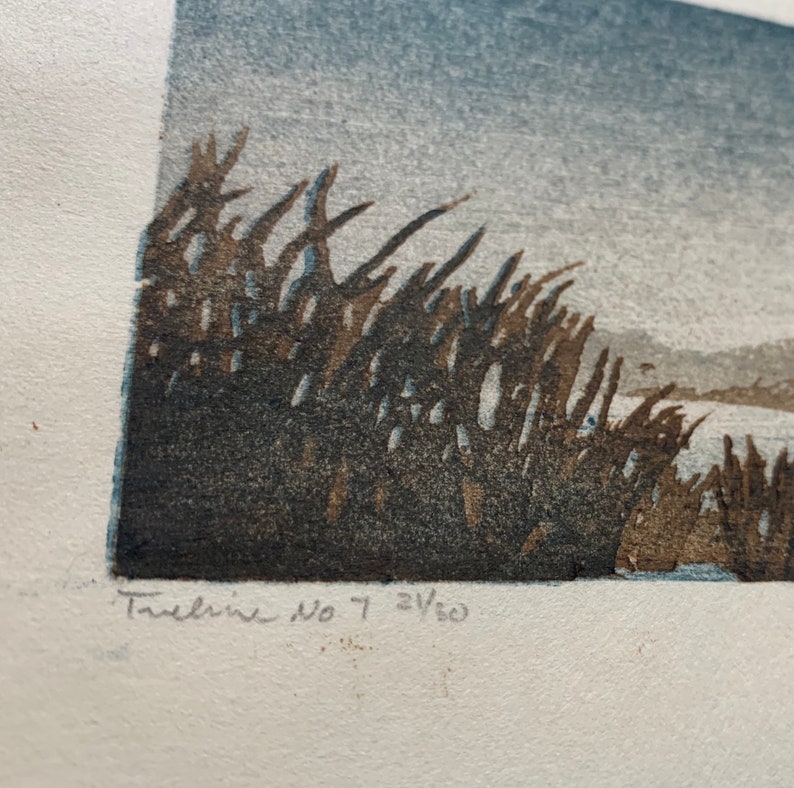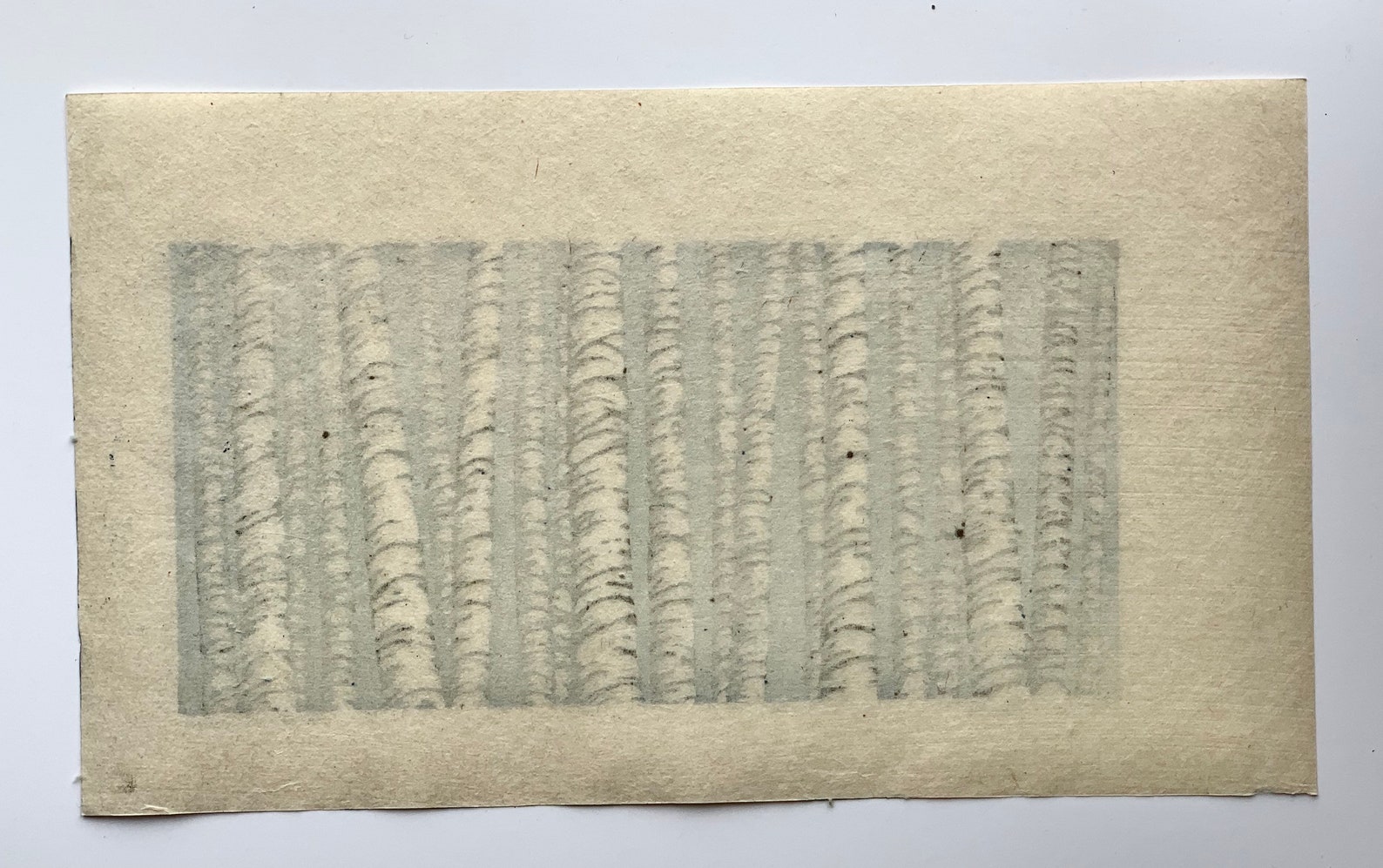
- MOKU HANGA REDUCTION PRINT REGISTRATION
- MOKU HANGA REDUCTION PRINT PLUS
- MOKU HANGA REDUCTION PRINT SERIES
It originated in China and developed into a popular art form during the Edo Period (1603-1867). Mokuhanga literally translates to “wood print” in Japanese. These artists have invited their teachers, students, and community members to honor the past and explore the future of mokuhanga. The Mokuhanga Sisters, a print collective of nine women, met at the Mokuhanga Innovation Laboratory (MI-LAB) between 2017-2019 and forged friendships through their practice of mokuhanga. Organized by the Mokuhanga Sisters and the Kentler International Drawing Space, the exhibition presents contemporary examples of this environmentally sustainable printmaking process. Her success in fostering understanding through cooperative international friendships is epitomized by the strong bonds of the Mokuhanga Sisters and their work maintaining and strengthening the international mokuhanga network.īetween Worlds explores the expansion of traditional Japanese woodblock printing (mokuhanga) from Japan into the global world of contemporary art. Artists who benefitted from her work have gone on to teach at universities and workshops around the world, written books, organized exhibitions, and published research on the history and materials of mokuhanga. She died in 2017, but her desire to promote world peace through the shared understanding of arts and culture lives on in the work of the many artists who participated in her programs. Keiko Kadota’s programs are unique in their personal flavor and international reach. The first IMC was held in Kyoto and Awajishima the second in Tokyo the third in Hawaii and the fourth, in 2021, had exhibitions and events in Nara, with international presentations and discussions online. An important initiative was establishing the triennial International Mokuhanga Conference to include a diversity of international artists and to provide a forum for maintaining contact among past residency participants. In addition to the residency programs, Keiko Kadota established her head office and gallery at 3331 Arts Chiyoda art center in Tokyo to promote mokuhanga through exhibitions and short-term classes. It opened in 2011 when the earlier program closed. Fuji grew from the Nagasawa Art Park program initiated by Keiko Kadota in 1998. MI-LAB, conveniently located two hours from Tokyo at the foot of Mt. Between Worlds highlights connections between group members, their teachers, their students, and the community of mokuhanga artists centered around this international training program. At the residency they refined their technique and built a strong network that has resulted in many shared projects and exhibitions. The group includes Katie Baldwin, Patty Hudak, Mariko Jesse, Kate MacDonagh, Yoonmi Nam, Natasha Norman, Mia O, Lucy May Schofield, and Melissa Schulenberg. As participants in the “Upper Advanced Residency” the Mokuhanga Sisters, as they became known, all had previous mokuhanga experience.

April Vollmer, author of Japanese Woodblock Print Workshopīetween Worlds brings together artists who developed strong connections during shared residencies at the Mokuhanga Innovation Laboratory (MI-LAB) in Japan.

Katie Baldwin, Matthew Willie Garcia, Hidehiko Gotou, Kyoko Hirai, Patty Hudak, Mariko Jesse, Shoichi Kitamura, Terry McKenna, Kate MacDonagh, Yoonmi Nam, Natasha Norman, Mia O, Brendan Reilly, Louise Rouse, Lucy May Schofield, Melissa Schulenberg, Ayao Shiokawa, Chihiro Taki, Katsutoshi YuasaĮxhibition Dates: June 17 - July 31, 2022Ĭlick Events page: Workshops, tours and public events. Two moku hanga working proofs with odd colorings remain available ($250 each) email artist to order any of these.
MOKU HANGA REDUCTION PRINT PLUS
Upon returning from Japan, Killion carved a sixth ‘green’ tint block and completed the oil-based ink/handpress edition (pictured) of 160 prints plus several artist proofs in November 2018.

have all the color blocks handprinted in Japan and then key block printed by Killion on his handpress with oil-based black ink once he returned from Japan, these have more consistent key block quality and lines are clearer (these moku hanga prints are sold-out).
MOKU HANGA REDUCTION PRINT SERIES
of 6 plus 2 a.ps was entirely handprinted by Killion in Kyoto, quality varies as these were ‘learning prints’ (out of print) Series II, ed.
MOKU HANGA REDUCTION PRINT REGISTRATION
Initially, five wood blocks were carved with traditional Japanese kento registration marks and taken to Kyoto to print moku hanga (traditional water-based ink handprinting) style in October 2018 a small number of moku hanga prints were completed, and two separate batches were made available: Series I, ed. Six block multi-color print with overprinting for bokashi effect on sky-lake block.

Printing History: Note: This print was made for the film production “Journey to Hokusai” (see Printmaking Page for video).


 0 kommentar(er)
0 kommentar(er)
